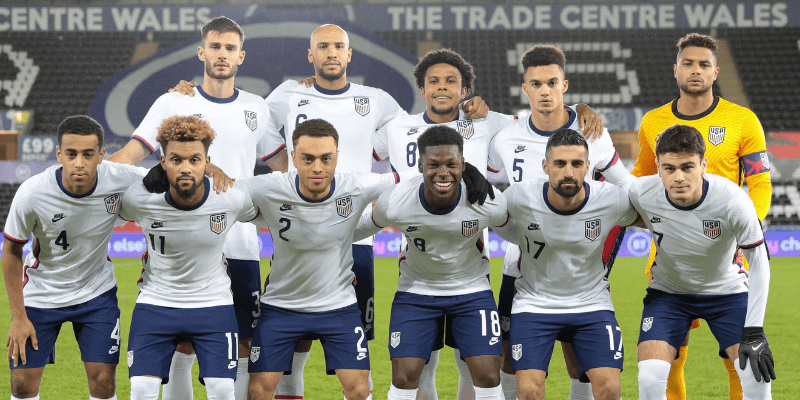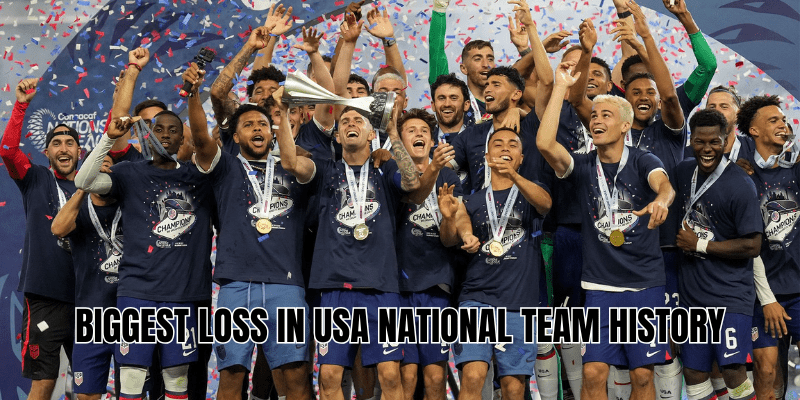When the U.S. men’s national team walks onto the pitch, every fan hopes for moments of pride and glory. But in football, bruising defeats are part of the narrative too. So: what is the biggest loss in USA national team history? In this article, CantoKick will go with you down the scars and the statistics —.
What Does “Biggest Loss” Mean?

Before we pin down a definitive match, we have to clarify what “biggest loss” refers to. Is it:
- The greatest goal margin?
- The worst defeat in a competitive fixture (World Cup, qualifier, Confederations Cup)?
- The worst defeat by modern standards (e.g. post-1950, post professionalism)?
Each framing yields different candidates. Records show that the worst goal differential ever suffered by the U.S. senior men’s side is an 11-0 defeat to Norway in 1948—in terms of raw margin, that is the high-water mark.
But looking at the competitive era, more shameful upsets, and high-stakes losses, other matches fight hard for the title. Below, we’ll explore both the historic high-margin loss and the most damaging defeats in competition.
The 11-0 Drubbing: Norway 1948
Background and Context
On August 8, 1948, the United States faced Norway in a friendly fixture and suffered a humiliating 0–11 defeat. This remains the single heaviest defeat by goal differential in U.S. men’s soccer.
This match occurred in a period when international travel, squad consistency, and tactical sophistication were still evolving. The U.S. was fielding a relatively inexperienced side, while European teams were more battle-hardened, especially in friendlies where experimentation was common.
Why It Stands Out
- The magnitude: an 11-goal margin has never been matched by the United States.
- Psychological weight: losses of such scale mark a nadir in team confidence, especially during an era without much media protection or mechanisms for recovery.
- Historical record: the match still shows up in all statistical summaries as the U.S. men’s worst defeat by margin.
So by strict measure of goals conceded over goals scored, the 11–0 Norway result reigns supreme—or rather, infamously.
Most Damaging Losses in Competitive Football

While 11–0 may be the record book monster, many U.S. fans would argue the “biggest loss” is the one that left a dee.
Italy 7–1 | 1934 FIFA World Cup (Round of 16)
In the early chapters of U.S. World Cup history, the 1934 tournament in Italy was brutal for the American side. In the Round of 16 match on May 27, 1934, the U.S. side was overwhelmed by Italy 7–1 — a loss still cataloged in U.S. soccer’s hardest defeats.
Though fewer decades had passed and the game’s global structures were still rudimentary, that result in a World Cup knockout match has deep resonance, especially considering 1934 Italy was a then-power in world football.
Argentina 6–1 | 1930 FIFA World Cup
In the inaugural World Cup of 1930, the U.S. made a remarkable run to the semifinals but met Argentina. In that match, Argentina swept the Americans aside in a 6–1 victory.
While not as lopsided as the Norway game, its weight lies in the stage: a semi-final defeat in the first World Cup sears into the memory of any historic record.
Trinidad & Tobago 2–1 | 2017 World Cup Qualifier
Fast forward many decades and the wounds are fresher — sometimes sharper — in qualifying matches. On October 10, 2017, the U.S. lost 2–1 to Trinidad & Tobago, a match that knocked them out of involvement in the 2018 World Cup.
While the margin is modest, the stakes were immense. The narrative of failure, national shock, and managerial upheaval make this loss among the most infamous in U.S. soccer history.
Mexico 5–0 | 2009 Gold Cup Final
In the realm of rivalry and regional supremacy, a 5–0 defeat in a Gold Cup final cuts deep. Facing Mexico on home soil, the U.S. side was thrashed. The margin and setting (a final against arch-rivals) make it a signature low point for many fans.
It’s not the worst in raw numbers, but it’s arguably one of the most humiliating given the context and symbolic weight.
Comparing Perspective: Margin vs. Meaning

To make sense of which defeat deserves the title of biggest loss, we can contrast two dimensions:
| Loss Type | Match | Margin | Stakes / Emotional Impact | Why It Counts |
| Record margin | Norway 11–0 (1948) | +11 goals | Friendly, lower stakes | Purist record book worst |
| Competitive slaughter | Italy (1934) | +6 goals | World Cup knockout | Highest margin in competition |
| Deep shock | Trinidad & Tobago 2–1 (2017) | +1 goal | Eliminated U.S. from World Cup | Greatest modern heartbreak |
| Rivalry humiliation | Mexico 5–0 (2009) | +5 goals | Gold Cup Final | Symbolic and painful |
So which is the biggest loss? If your definition is purely statistical, Norway’s 11–0 is unassailable. If you regard emotional, competitive stakes, and legacy, then the 2017 qualifier loss to Trinidad & Tobago might resonate more today.
How This Loss Shapes U.S. Soccer Memory
Defeats, large or small, are often turning points in national team histories. They force introspection, shifts in leadership, reform of tactics, youth program overhauls, and rebranding of mentality.
- The 11–0 match long haunted the record books, reminding fans that the U.S. once lagged far behind.
- The 1934 7–1 loss came during U.S. early World Cup forays, indicating how much the global gap was against them.
- The 2017 loss to Trinidad & Tobago pushed U.S. Soccer into crisis mode: coaches were fired, structures questioned, and trust shaken.
- Losses to Mexico in finals underscore the pressure cooker of CONCACAF rivalry — where every game has identity stakes beyond points.
Over time, the U.S. has pivoted: MLS academies, youth development, hiring top coaches, international exposure. Losses like these, however painful, became part of the crucible that forged modern improvements.
Final Thoughts
Biggest loss in USA national team history is not a simple label — it depends on whether you measure by goal margin or emotional and competitive damage. By margin, the 11–0 defeat to Norway in 1948 remains the worst ever endured by the U.S. men’s side. But when you factor in consequences, heartbreak, and national fallout, matches like Trinidad & Tobago 2–1 in 2017 may hit harder.
CantoKick hopes this journey through the darkest days of U.S. men’s soccer gives you a fuller view beyond just numbers. If you want player perspectives, tactical breakdowns of those matches, or a ranking of top 10 worst defeats — just tell me what you’d like next.



